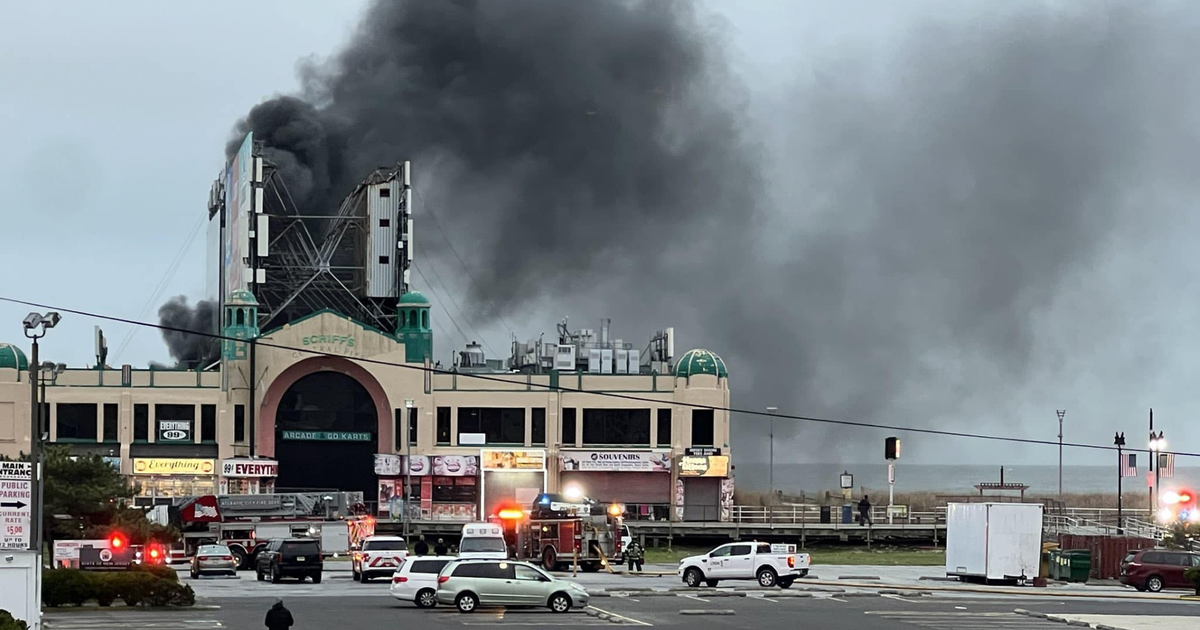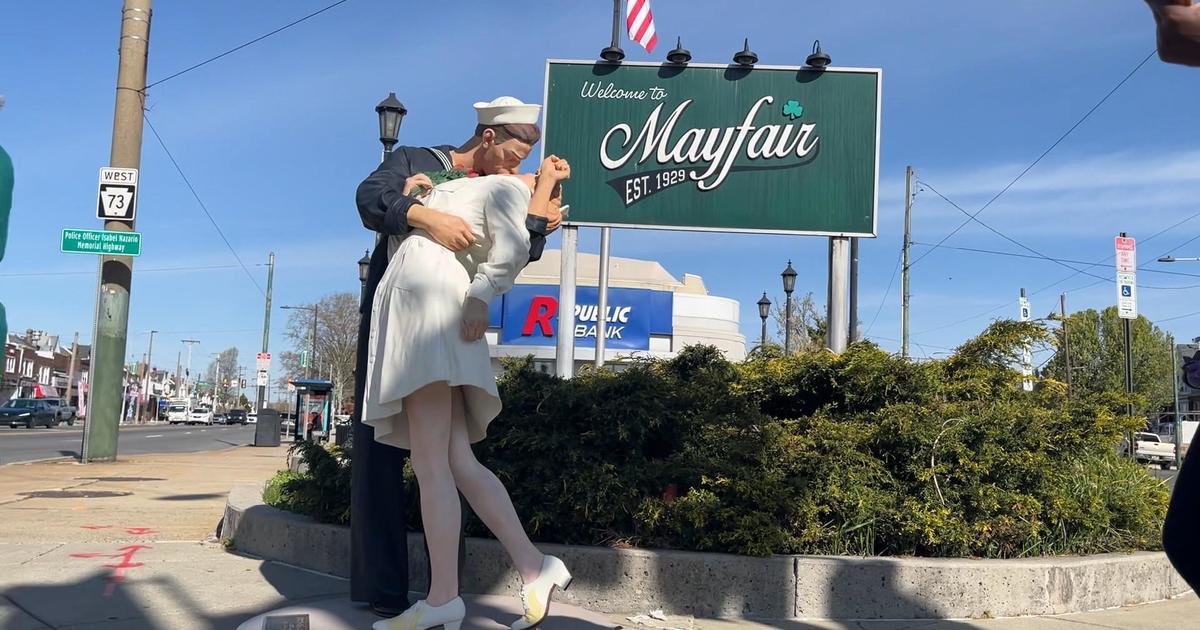A Day In The Life Of An FAA Test Pilot
By Veronica Dudo
ATLANTIC CITY, NJ (CBS) -- During her 25 year career, Lorry Faber has flown the President of the United States overseas, taken dignitaries to and from Washington D.C. and hovered over Mount Fuji in a helicopter. Currently, she tests air transportation projects throughout the country and around the world. And these are only some of the amazing adventures Faber has embarked on through the years. This is a day in the life of a Federal Aviation Administration test pilot.
(See photos here)
Flying is a major method of transportation. In addition to education, training and experience, pilots rely on software to help manage the friendly skies. New systems, equipment and software programs undergo extensive testing before being implemented in airports and air traffic control facilities across the country. The Federal Aviation Administration (FAA) William J. Hughes Technical Center in Pomona, NJ is the nation's premier aviation research, development, test and evaluation facility.
Faber is a flight test research and development pilot and flight program safety officer with the FAA Technical Center, located at the Atlantic City International Airport. As a project pilot, she conducts essential flight tests for several key research programs covering a variety of areas including: Automatic Dependent Surveillance-Broadcast (ADS-B), a cornerstone project of the Next Generation Air Transportation System, called NextGen; Synthetic/Enhanced Vision development; helicopter steep angle approaches; low-visibility criteria for aircraft; and surveillance based systems for the National Airspace System.
Taking Flight
Faber grew up in Fort Lauderdale, Florida. She attended the U.S. Air Force Academy after graduating from high school.
"It was a pretty big step," she recalls about her decision to study at the Academy in Colorado Springs. "Even then, I had no strong commitments about flying for the Air Force. I just wanted a solid education."
Faber was one of 100 women in her graduating class, which also included 1,000 men.
But as fate would have it, she became a pilot and traveled the world. Her journey began in the mid 1980's, when Faber says the Air Force started recruiting more women into military flying positions.
"Not many women were even qualified," she explains. "Many were too short or wore glasses. I just happened to meet the physical requirements."
Faber says she wanted to fly combat aircraft, but a law barring women from flying warplanes in combat zones limited her options. Instead, she embarked on an unpredictable route.
"I learned to fly helicopters with the Air Force, [which is] normally something you would do with the Army," she recalls of her unique career path, which led her to train with the Army for a year in Fort Rucker, Alabama.
"When I first started flying, it was difficult because I faced a generation before me that didn't see women in the workforce, let alone a workforce that was predominately male," she says.
This proved true when Faber had the honor of flying the Commander in Chief during a very special mission. "I had the joy of flying President Bush Sr. when I was in Kuwait, with his Secret Service. He told me, 'I never thought I'd see the day I'd have a woman flying me around in an Air Force machine.' Having been a World War II pilot, he apparently had his own preconceived notions about women flying, but he didn't feel unsafe in the situation."
Faber asked him if she could have a picture of the two of them, and President Bush said it would be his pleasure.
Women have been piloting airplanes since Harriet Quimby, the first licensed female pilot, flew in 1911. In 1974, the U.S. Navy and Army took unprecedented steps and trained women to become military aviators, which lead to several women earning their wings. In 1976, the U.S. Air Force admitted women to its pilot training programs, but all these women were limited to non-combat flying.
But in 1993, the U.S. Secretary of Defense opened combat flying to women, enabling them to fly warplanes in combat zones. Faber finally got her chance to fly combat rescue helicopters.
"At the time, there was tension. It was never outwardly directed to me, but I knew I was the oddball. I knew at the end of the day if I wanted to be here, I needed to do the job to the best of my ability. Then, people's attitudes would change, once they saw that," she says.
Faber served in active duty for 10 years and traveled extensively throughout Asia, Europe and North America. She worked for the Alaska Air National Guard and other FAA offices before joining the FAA Technical Center.
FAA Flight Test Research & Development Pilot
In her current position as a Flight Test Research and Development Pilot and a flight program safety officer, Faber carries out numerous duties on both flying and non-flying days.
Any type of new systems software program that would be implemented across the country is first tested at the FAA Technical Center.
"Before a test even comes to me in the air, it is run through a variety of simulations on the ground, using computers," Faber says.
Different systems involve different amounts of testing. The last phase of a project is flight testing. The projects tested by the pilots at the FAA Technical Center cover the areas of air traffic control, communications and navigation.
"The part we all love the most is the variety; we're all kind of science geeks at the end of the day," she says.
If a pilot has a background related to specific project requirements, that pilot will be selected to conduct flight testing for the project. When a project gets to Faber's office, a test plan is first presented.
"If I'm the pilot assigned to a project, I will get a test plan, read it and talk with the project person, 'So, this is how I read this; is this what you want? How about flying at these airspeeds and altitudes? Will this bank angle be sufficient? Your project will reside in New York airspace, which is very congested. I suggest we move the test area five miles south.' That sort of conversation will take place," she explains.
On a flight day, Faber goes into the office to check the airplanes. "We'll sit down and talk to the maintenance and engineering crews about that aircraft and confirm that the airplane is ready for flight. We'll figure out how much fuel we'll need, and most of that will happen the day before, but we'll just confirm it that morning and start looking at weather maps," she explains.
Each FAA pilot is trained and certified as a "Pilot in Command" (equivalent to "Captain") on all six aircraft that comprise the Technical Center's fleet. The fleet includes: the Bombardier Global 5000, a high-speed business jet; the Beechcraft Super King Air, a twin-turboprop aircraft; the Navajo Chieftain, a cabin class twin-engine aircraft; two Convair 580's, with turboprop engines and four-bladed propellers; and the Sikorsky S-76, a medium-size commercial utility helicopter. After making sure everything is working properly, Faber briefs passengers onboard about the trip and continues with preflight and flight checklists.
Some projects take the pilots across the country, and others are local.
We recently joined Faber and an experimental team for a test flight in the Convair 580. While conducting landings and take-offs, we flew 25 miles out over the Atlantic Ocean, along the Jersey Shore and high above the Atlantic City coastline.
On non-flight days, Faber handles paperwork, talks with the air traffic control towers at other airports about upcoming projects and conducts research.
"I'll gather aircraft information to review – have there been any incidents or accidents to aircraft or at other airports?—so we all can learn from it," she says.
All FAA pilots regularly attend training classes. "We're constantly learning about new flight procedures and improved aircraft handling," Faber explains. "We all want to be smarter before we get into the aircraft."
The World through the Clouds
Faber estimates she's logged more than 5,000 flight hours in her 25-year career.
"I like being in the moment – the intense concentration. Flying takes total focus and concentration. You can't be distracted when you are flying—you really must have strong focus," she says.
From missions to experiments, Faber has flown just about everywhere north of the Equator.
"I've seen amazing sights. Over the years, I have seen all kinds of mountains, beaches, bodies of water, wildlife and unusual aircraft," says Faber. "It's hard to describe how the sky looks at 40,000 feet, because it is always different. But, it's an exciting, neat perspective of the world."
Faber has had the opportunity to explore foreign marvels around the globe in a very unique way, thanks to her front seat view of the world.
"When I was flying a helicopter looking at Mount Fuji, it was pretty cool through the clouds," she remembers. "I've seen the polar caps, and I've flow near the Equator, just two degrees north in Singapore. I've flown throughout Asia, Europe, and all of North America."
Reflecting on her career, Faber says, "Overall though, I enjoy flight testing at the FAA's Technical Center best of all."
Though she started out with no aspirations to fly, Faber's destiny eventually took flight, leading her to see the world through the clouds, fly in combat zones and pilot groundbreaking experiments to help the future of aviation. For Faber, it's all in a day's work as an FAA test pilot.
Veronica Dudo is an award-winning journalist covering everything from breaking news to red carpet celebrity interviews. Follow her on Twitter @VeronicaDudo and Facebook http://www.facebook.com/pages/Veronica-Dudo/193258274047563



